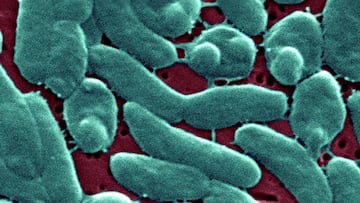What do we know about Vibrio vulnificus, the ‘flesh-eating’ bacterium that has caused several deaths in USA?
Rare, flesh-eating bacteria have been linked to the deaths of several people in the US. What is Vibrio vulnificus and how does it affect the human body?


Several deaths linked to rare, flesh-eating bacteria have been reported in various parts of the US: two people in Connecticut were infected with Vibrio vulnificus after swimming, while another one was infected after eating raw oysters. The bacteria were also detected in the body of a person who died in Long Island.
State health officials in Florida reported that the presence of V. vulnificus was verified in five bodies in the Tampa Bay area, with a total of 26 cases of necrotizing fasciitis, the lethal infection caused by the bacteria, confirmed statewide so far in 2023.
READ ALSO: Tropical storm Franklin to grow into hurricane
DEADLY BACTERIA: Rare, flesh-eating bacteria kills 5 in Tampa Bay area https://t.co/6iER7gynm1 pic.twitter.com/1AzLWR6McG
— WFLA NEWS (@WFLA) August 17, 2023
What do we know about Vibrio vulnificus, the ‘flesh-eating’ bacterium that has caused several deaths in USA?
Vibrio vulnificus is a type of bacteria commonly found in warm coastal waters, particularly in the Gulf of Mexico and other similar environments. It is a Gram-negative, curved rod-shaped bacterium that can cause infections in humans, particularly when people come into contact with contaminated water or consume raw or undercooked seafood containing the bacteria.
Infections caused by V. vulnificus can lead to two main types of diseases.
Wound infections
When an open wound is exposed to contaminated seawater, it can lead to a localized skin infection. This infection can cause swelling, redness, pain, and the development of blisters. The bacteria can attack muscles and other organs, and in severe cases, the infection can spread to deeper tissues and cause their rapid destruction.
READ ALSO: Who paid for Trump’s $200K bail bond in Georgia?
Septicemia (Blood infection)
Consuming raw or undercooked seafood that contains Vibrio vulnificus, particularly oysters, can lead to a more severe and potentially life-threatening infection. The bacteria can enter the bloodstream and cause septicemia, a condition where bacteria multiply in the blood, leading to symptoms such as fever, chills, nausea, vomiting, and potentially severe complications like septic shock.
Individuals with weakened immune systems, chronic liver disease, or certain underlying health conditions are at a higher risk of developing severe infections from V. Vulnificus.
How to avoid Vibrio vulnificus infection
Preventive measures include avoiding raw or undercooked seafood, especially oysters and shellfish, thoroughly cooking seafood before consumption, and avoiding exposure to contaminated water if you have open wounds or cuts.
Related stories
If you suspect an infection or experience symptoms after possible exposure, it’s important to seek medical attention promptly.
Authorities stress that this kind of bacteria is rare, but precautions must be taken because it is extremely dangerous.

